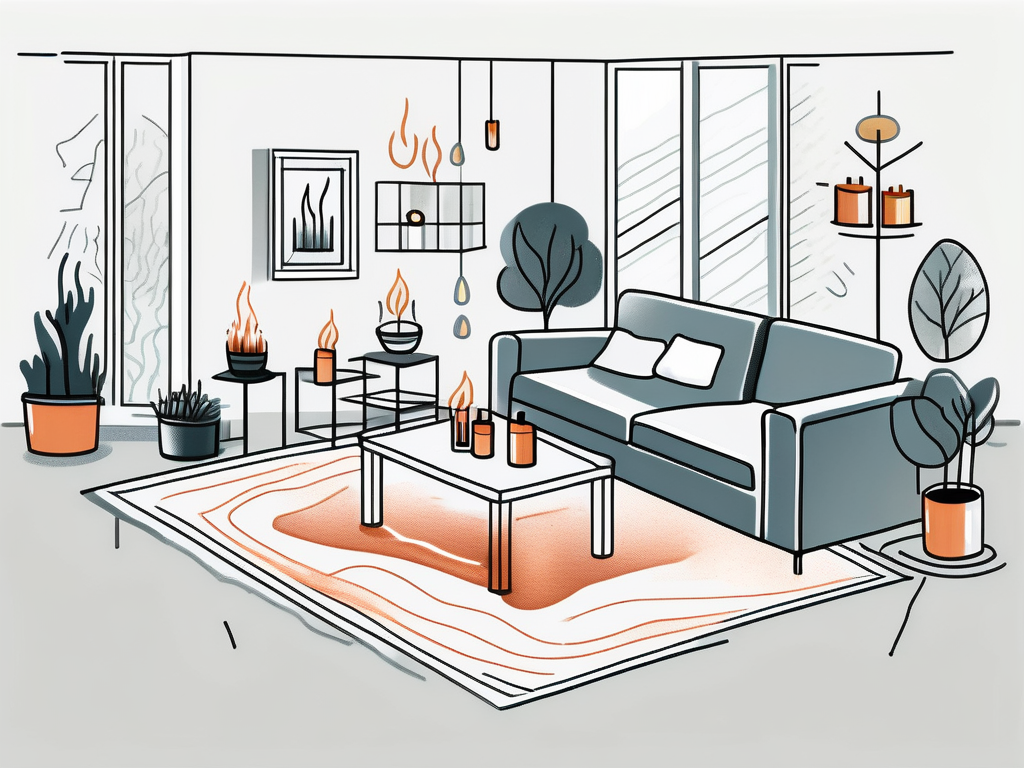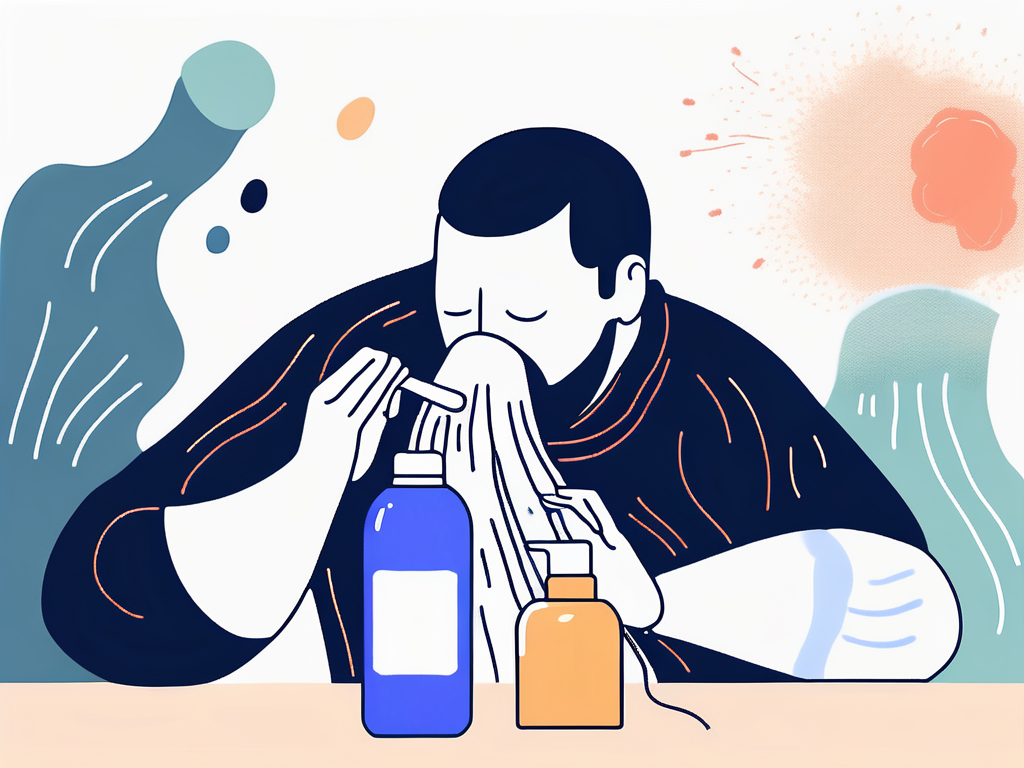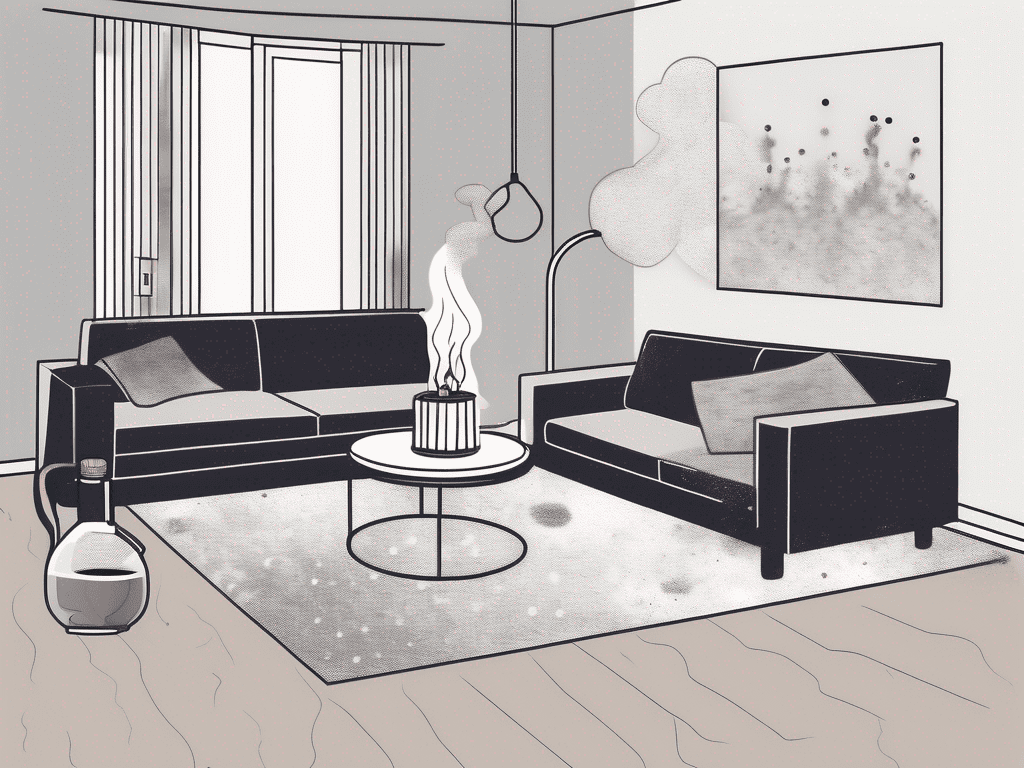Volatile Organic Compounds (VOCs) are a group of carbon-based chemicals that easily evaporate at room temperature. They are ubiquitous in our indoor environments, emanating from a wide array of products and materials we use every day. Their impact on indoor air quality and, consequently, on human health, is a subject of significant concern and ongoing research.
Understanding VOCs, their sources, their effects on indoor air quality, and how to manage them, is crucial for maintaining a healthy and safe indoor environment. This glossary entry aims to provide a comprehensive understanding of VOCs in the context of indoor air quality.
What are Volatile Organic Compounds (VOCs)?
VOCs are organic chemicals that have a high vapor pressure at ordinary room temperature. This high vapor pressure is due to their low boiling point, which leads to large numbers of molecules evaporating from the liquid or solid form of the compound and entering the surrounding air. VOCs include both human-made and naturally occurring chemical compounds.
Many VOCs are commonly used and stored indoors, thus contributing to indoor air pollution. They are released from certain solids or liquids, including paints, cleaning supplies, pesticides, building materials, furnishings, adhesives, permanent markers, and more. Some VOCs have no known health effects, while others can be harmful to health when inhaled, either immediately or over a prolonged period.
Classification of VOCs
VOCs can be classified based on their boiling points, reactivity, and potential health effects. Some VOCs are extremely volatile, meaning they will readily evaporate at room temperature, while others are less volatile. The volatility of a compound is important because it determines how readily the compound will become airborne, contributing to indoor air pollution.
From a health perspective, VOCs can be classified as toxic and non-toxic. Toxic VOCs are those that, when inhaled, can cause health problems such as headaches, irritation of the eyes, nose, and throat, nausea, and in some cases, damage to the liver, kidneys, and central nervous system. Some VOCs are known carcinogens.
Sources of VOCs in Indoor Environments
VOCs can originate from a variety of indoor sources. They are emitted by a wide array of products numbering in the thousands. Among the most common are paints and lacquers, paint strippers, cleaning supplies, pesticides, building materials and furnishings, office equipment such as copiers and printers, correction fluids and carbonless copy paper, graphics and craft materials including glues and adhesives, permanent markers, and photographic solutions.

Other sources of indoor VOCs include burning fuels such as gas, wood, kerosene, or coal, and tobacco products. VOCs can also be emitted by personal care products like perfumes and hair sprays, air fresheners, and dry-cleaned clothing. Even activities such as cooking can release VOCs into the indoor environment.
Building Materials and Furnishings
Many building materials, including plywood, particleboard, adhesives, sealants, and a variety of common household products, emit VOCs. These materials may release VOCs for years after they are initially installed in a home or building. Furnishings made from these materials can also emit VOCs into the indoor environment.
For example, formaldehyde, a common VOC, is often used in the production of resins that bind wood products, carpets, upholstery, and drapes. When these products are new, they can release formaldehyde into the air. Over time, the rate of release decreases, but it can still contribute to indoor VOC levels.
Household Products
Many common household products emit VOCs. These include paints, varnishes, wax, and many cleaning, disinfecting, cosmetic, degreasing, and hobby products. These products can release VOCs while they are being used, and to some degree, when they are stored.
For example, when paint is applied to a wall, it releases VOCs into the air. This release of VOCs continues even after the paint has dried. Similarly, when a floor is waxed or a surface is cleaned with a cleaning product, VOCs can be released into the air.
Health Effects of VOCs
The health effects of VOCs can vary greatly, depending on the type of VOC, the length of exposure, and the individual characteristics of the person exposed. Some people may not experience any health effects, while others may experience one or more of a wide range of symptoms.

Short-term exposure to VOCs can result in eye, nose, and throat irritation, headaches, nausea, dizziness, and skin problems. Higher concentrations of VOCs can cause more serious effects, including damage to the liver, kidney, and central nervous system. Some VOCs, such as benzene and formaldehyde, are known to cause cancer in humans.
Short-Term Exposure
Short-term exposure to VOCs can result in temporary health effects. These effects often occur while the individual is being exposed or shortly thereafter. They typically resolve once the exposure ends. Symptoms can include eye, nose, and throat irritation, headaches, dizziness, visual disorders, and memory impairment.
However, some people may be more sensitive to VOCs and may experience symptoms at lower levels of exposure than others. These individuals may also experience more severe symptoms. It’s also important to note that some VOCs can cause an allergic skin reaction and may exacerbate asthma symptoms.
Long-Term Exposure
Long-term exposure to VOCs can result in more serious health effects. These effects may not become apparent until years after the exposure has occurred. Long-term effects can include damage to the liver, kidneys, and central nervous system. Some VOCs are known to cause cancer in humans.
Individuals who are exposed to high levels of VOCs for extended periods may also experience chronic respiratory problems, allergic reactions, and a condition known as Multiple Chemical Sensitivity (MCS), which is characterized by sensitivity to even low levels of chemicals.
Managing VOCs in Indoor Environments
Managing VOCs in indoor environments involves a combination of strategies, including source control, ventilation, and air cleaning. These strategies can help to reduce the levels of VOCs in the indoor environment and thereby reduce the risk of health effects.
Source control is the most effective strategy for reducing VOCs. This involves choosing products that emit fewer or no VOCs, following manufacturers’ instructions when using these products, and disposing of unused products safely. Ventilation can help to remove VOCs from the indoor environment, and air cleaning can help to remove VOCs from the air.
Source Control
Source control is the most effective way to reduce VOCs in the indoor environment. This involves choosing low-VOC or no-VOC products, using products as directed by the manufacturer, and storing and disposing of products properly to minimize emissions.
For example, when choosing paints, varnishes, and waxes, look for products that are labeled as low-VOC or no-VOC. When using these products, follow the manufacturer’s instructions to minimize VOC emissions. Store unused products in a well-ventilated area or dispose of them at a hazardous waste facility.
Ventilation
Good ventilation can help to reduce the levels of VOCs in the indoor environment. This involves bringing in fresh outdoor air to replace indoor air that contains VOCs. Ventilation can be achieved through natural means, such as opening windows and doors, or through mechanical means, such as using fans and air conditioning systems.
However, ventilation is not always sufficient to remove VOCs from the indoor environment. In some cases, it may be necessary to use air cleaning devices, such as air purifiers, to remove VOCs from the air.
Air Cleaning
Air cleaning devices, such as air purifiers, can help to remove VOCs from the indoor air. These devices use various methods to clean the air, including filtration, adsorption, and photocatalytic oxidation. However, not all air cleaners are effective at removing VOCs, and some may even produce harmful byproducts.
When choosing an air cleaner, it’s important to choose one that is designed to remove VOCs. Look for air cleaners that use activated carbon filters, which are effective at adsorbing VOCs. Also, consider the size of the space where the air cleaner will be used, as this will determine the size and type of air cleaner needed.
Conclusion
Volatile Organic Compounds (VOCs) are a significant contributor to indoor air pollution. They are emitted by a wide array of products and materials commonly found in our homes and workplaces. Understanding VOCs, their sources, and their effects on health is crucial for maintaining a healthy and safe indoor environment.

Managing VOCs in indoor environments involves a combination of strategies, including source control, ventilation, and air cleaning. By implementing these strategies, we can reduce the levels of VOCs in our indoor environments and thereby reduce the risk of health effects associated with VOC exposure.




